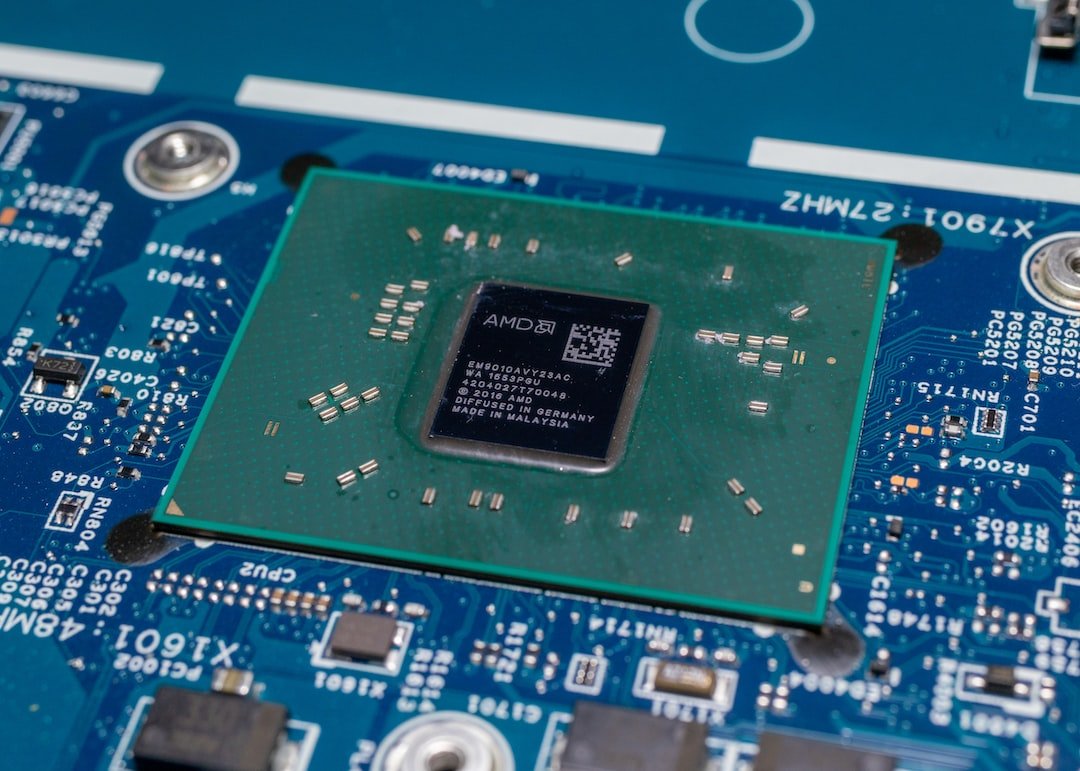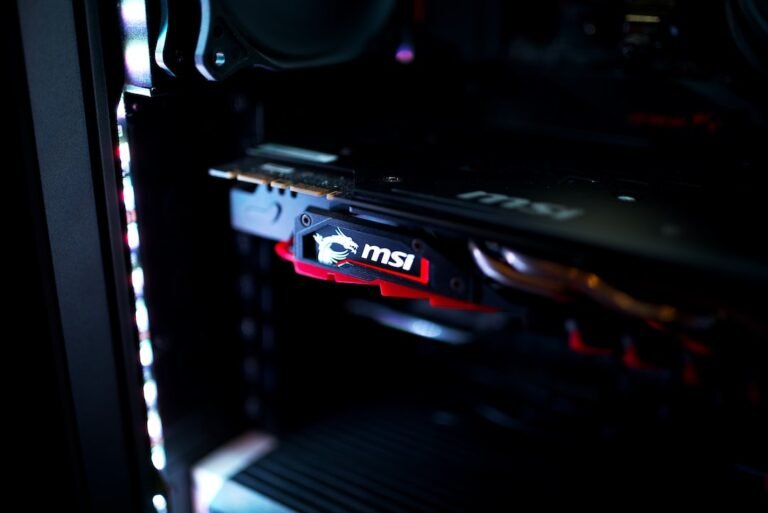Introduction
Have you ever experienced frustrating network issues, such as slow internet speeds, dropped connections, or inconsistent performance? It can be incredibly frustrating, especially in today’s digital age, where we rely heavily on a stable and fast internet connection for work, entertainment, and communication. Thankfully, with advancements in technology, there are solutions available to help maximize network performance and ensure a seamless online experience. One such solution is dynamic channel selection in mesh Wi-Fi networks.
In this article, we will explore the concept of dynamic channel selection in mesh Wi-Fi networks and how it can significantly improve network performance. We will dive into the benefits, implementation, and how it works to provide you with a strong, reliable, and high-performing Wi-Fi network. So, let’s get started and learn how to maximize network performance with dynamic channel selection in mesh Wi-Fi!
Understanding the Challenges of Wi-Fi Networks
Before we delve into dynamic channel selection in mesh Wi-Fi networks, let’s first understand the challenges associated with traditional Wi-Fi networks. In a typical home network setup, a single router is responsible for transmitting and receiving signals to and from connected devices. However, as the number of devices and the distance from the router increases, several issues arise that impact network performance.
Channel Interference
One of the primary challenges in Wi-Fi networks is channel interference. Wi-Fi networks operate on specific frequency bands such as 2.4GHz and 5GHz. These frequency bands are divided into channels that allow multiple devices to communicate simultaneously. However, when multiple routers or wireless devices operate on the same channel, it can cause interference and result in slower speeds and degraded performance.
Signal Quality and Coverage
Another challenge is ensuring optimal signal quality and coverage throughout your home. Thick walls, concrete barriers, or even metal appliances can obstruct Wi-Fi signals, leading to weak or inconsistent coverage. This issue becomes more prominent in larger homes or those with multiple floors, where the router’s signal may struggle to reach certain areas.
Congestion in Urban Environments
In densely populated areas or apartment complexes, the Wi-Fi spectrum becomes congested with multiple networks operating in close proximity. This congestion leads to increased interference and reduced network performance. With more devices connecting to Wi-Fi networks than ever before, finding a clear channel to transmit and receive data can be a daunting task.
What is Dynamic Channel Selection in Mesh Wi-Fi?
Dynamic channel selection in mesh Wi-Fi networks is a technique used to optimize the performance and reliability of your wireless network. Unlike traditional Wi-Fi setups that rely on a single central router, mesh Wi-Fi systems consist of multiple interconnected nodes that work together to provide seamless coverage throughout a home or office space.
Each node in a mesh network acts as a repeater, extending the network’s range and ensuring a stable connection. The nodes communicate with each other wirelessly, forming a unified network that is capable of self-adjusting and optimizing network performance in real-time. Dynamic channel selection is one of the key features of mesh Wi-Fi systems that help overcome the challenges faced by traditional Wi-Fi networks.
How Dynamic Channel Selection Works
Dynamic channel selection in mesh Wi-Fi networks employs intelligent algorithms and advanced signal processing techniques to analyze the environment and make real-time decisions on channel selection. These algorithms continuously monitor the Wi-Fi spectrum, detect areas of interference or congestion, and automatically adjust the channels used by each node accordingly.
By dynamically selecting the optimal channels, mesh Wi-Fi networks can mitigate interference, reduce congestion, and maximize network performance. Here’s a step-by-step overview of how dynamic channel selection works:
1. Scan the Wi-Fi Spectrum
The mesh Wi-Fi system scans the available Wi-Fi spectrum to identify the channels that are least congested or subject to interference. This scan helps identify the channels that offer the best signal quality and least interference, ensuring optimal performance for your network.
2. Analyze and Evaluate
After scanning the Wi-Fi spectrum, the system analyzes the collected data and evaluates the quality of each channel. The system takes into account factors such as signal strength, interference levels, and congestion to determine the most suitable channels for optimal network performance.
3. Dynamic Channel Assignment
Once the analysis is complete, the system assigns channels to each node based on the evaluation results. Nodes are strategically placed throughout the network to optimize coverage and avoid overlapping signals. By dynamically assigning channels, the system can adapt to changes in the environment and ensure the best possible performance at all times.
4. Continuous Monitoring and Adjustment
Dynamic channel selection is an ongoing process. The system continues to monitor the Wi-Fi spectrum, reassess channel conditions, and adjust channel assignments as needed. This continuous monitoring allows the system to adapt to any changes in the surrounding environment, ensuring optimal network performance in real-time.
Benefits of Dynamic Channel Selection in Mesh Wi-Fi
The implementation of dynamic channel selection in mesh Wi-Fi networks offers several significant benefits that can greatly enhance your network performance. Let’s explore some of these benefits:
1. Channel Optimization
With dynamic channel selection, your mesh Wi-Fi network intelligently selects and assigns optimal channels based on the current environment. This optimization helps mitigate interference and congestion, allowing for faster and more reliable connections. By choosing the right channels, dynamic channel selection ensures that your devices can communicate efficiently, resulting in improved network performance.
2. Interference Reduction
One of the main culprits behind network performance issues is interference from other devices or neighboring networks. Dynamic channel selection actively monitors the Wi-Fi spectrum and adapts to changes in signal quality. By avoiding congested or interference-prone channels, the system minimizes the impact of external interference, resulting in a more stable and reliable connection.
3. Improved Network Performance
By optimizing channel selection and reducing interference, dynamic channel selection significantly improves overall network performance. You can expect faster internet speeds, reduced latency, and a more consistent connection throughout your home or office. Whether you’re streaming HD videos, playing online games, or conducting video conferences, dynamic channel selection ensures a seamless and lag-free experience.
Conclusion
Dynamic channel selection in mesh Wi-Fi networks is a game-changer when it comes to maximizing network performance. By intelligently selecting and assigning optimal channels, mesh Wi-Fi systems can optimize coverage, reduce interference, and provide a stable and reliable connection throughout your home or office.
With dynamic channel selection, you can say goodbye to slow internet speeds, laggy online gaming, and buffering videos. Enjoy the benefits of improved network performance, seamless connectivity, and an enhanced online experience. Upgrade your Wi-Fi setup with a mesh Wi-Fi system that utilizes dynamic channel selection, and unlock the full potential of your network.
Frequently Asked Questions (FAQ)
Here are some commonly asked questions about dynamic channel selection in mesh Wi-Fi networks:
| Question | Answer |
|---|---|
| How does dynamic channel selection impact network performance? | Dynamic channel selection optimizes channel usage, minimizing interference and congestion, resulting in improved network performance. |
| Can I implement dynamic channel selection on my existing router? | Dynamic channel selection is a feature found in mesh Wi-Fi systems. If you have a traditional router, you may need to upgrade to a mesh Wi-Fi system that supports this functionality. |
| Does dynamic channel selection work in dense urban environments? | Yes, dynamic channel selection is especially beneficial in dense urban environments where Wi-Fi congestion is common. It helps find clear channels and mitigates the impact of interference from neighboring networks. |
| Can I manually select channels in a mesh Wi-Fi system? | While it is possible to manually select channels in some mesh Wi-Fi systems, dynamic channel selection offers the advantage of automatic optimization based on real-time conditions. |
| How many nodes do I need for a mesh Wi-Fi system to benefit from dynamic channel selection? | The number of nodes required will depend on the size of your home or office space. It is recommended to have at least three nodes to ensure optimal coverage and take full advantage of dynamic channel selection capabilities. |




